If you ask someone to draw you a picture of a snake, there's a really good chance they will draw a forked tongue sticking out of its mouth. Pretty much everyone knows that all snakes (and some lizards!) have bizarre forked tongues that they flicker through the air as they slither around, but fewer understand exactly why. With tongues being fairly consistent in shape across the vertebrate animal kingdom, why are snakes' so drastically different?
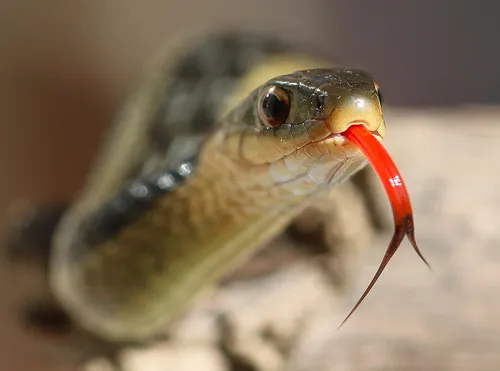
If you go to the mirror and stick your tongue out, it will undoubtedly look something like this:

Humans, and most other vertebrate animals, have rounded tongues like the one pictured. It works pretty simply; the tongue is covered in taste buds which provide information to our brain about how something tastes. Sensitive microscopic hairs called microvilli will detect whether objects are sweet, sour, salty or bitter.
To understand why a snake's tongue is so different from your own, you have to know how they sense the world around them. Human beings rely primarily on sight and sound to identify things and people around them; at close distance we rely on our sense of touch, but we don't strongly rely on our sense of taste or smell. Snakes completely lack an outer ear and eardrum so hearing is completely out of the question (though they can detect some sound vibrations if loud/close enough). Their eyes do not focus particularly well; while they can make out certain shapes and moving objects, their sense of sight is quite limited. Even at close range, their sense of touch doesn't convey much information as they are covered in keratin scales. This leaves them heavily relying on their chemosensory systems, essentially taste and smell (and a few rely on heat-sensory organs, but this is not universal in snakes!).
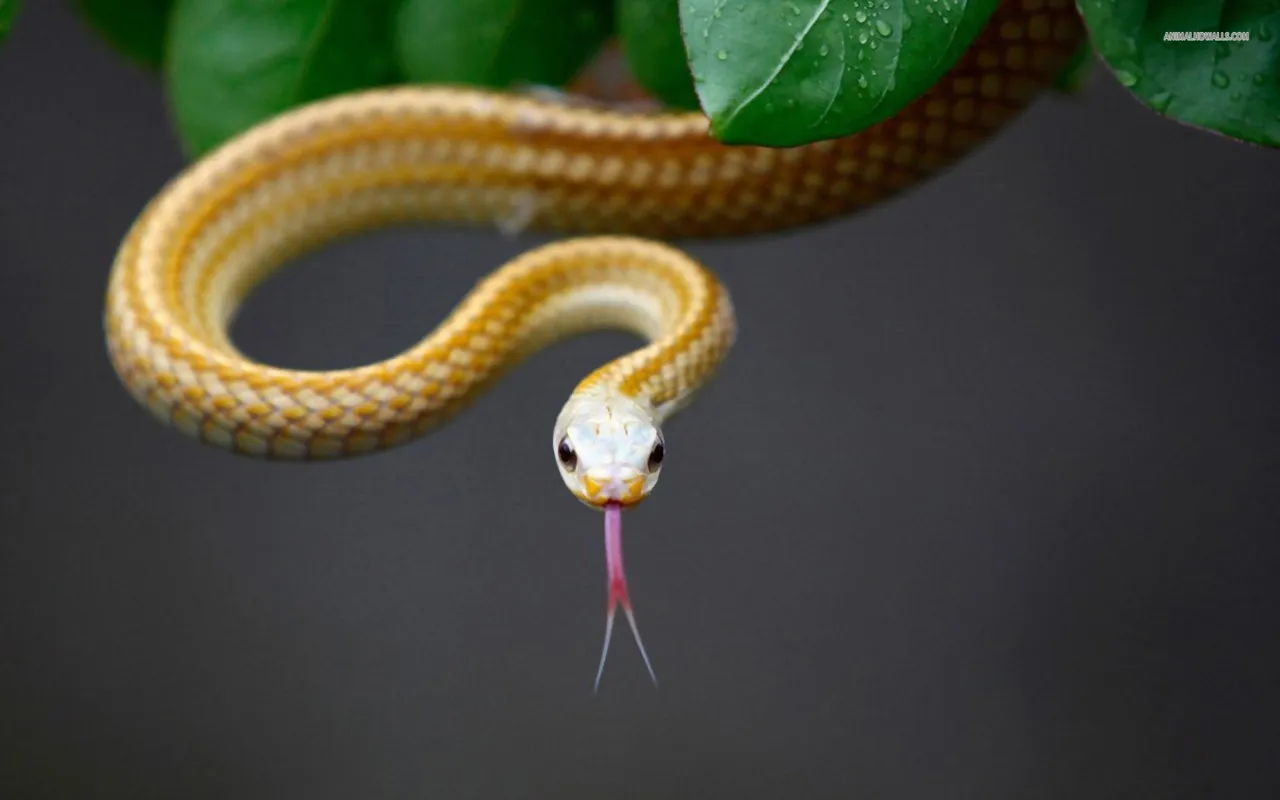
It's well known that snakes essentially "smell" with their tongues, but the fact is, the tongue itself doesn't actually taste or smell. Unlike our taste bud-covered tongues, the tongues of snakes completely lack taste buds and smell receptors. Instead, they rely on a vomeronasal organ called the Jacobson's organ (you have one too!). Snakes have two holes in the roof of their mouths which open to the Jacobson's organ; it essentially performs the task our taste buds do, reading the chemical cues on the tongue. Every time a snake flicks its tongue, it is simply gathering chemical particles out of the air; snakes even have different flicking patterns for collecting different chemical signals. When the tongue is brought back into the mouth, it is placed against the Jacobson's organ which identifies the chemicals or pheromones that were picked up. The organ then sends signals through nerves into the olfactory bulbs in the snake's brain. This system allows snakes to find prey, keep track of their location and find a mate.
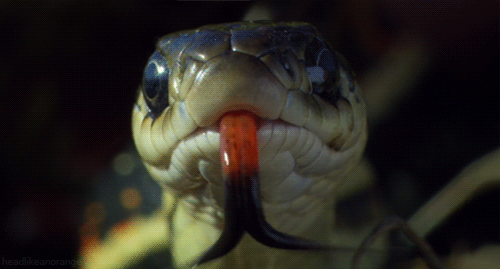
So why is the tongue forked? Tracking something by smell can be difficult; it's one thing to identify a scent, but it's another thing entirely to find the source...especially one on the move. In humans, our noses can't really detect the direction of a scent; if we want to locate the source, we actively move around to see where the aroma is stronger. The forked tongue of a snake is the perfect tool for locating the sources of these scents, primarily prey. As the tongue leave the mouth, the forks are spread wide. When the tongue returns to the Jacobson's organ, it can actually detect which tongue fork contains more of the chemical. If it's stronger on one side, the snake knows the direction it needs to go.
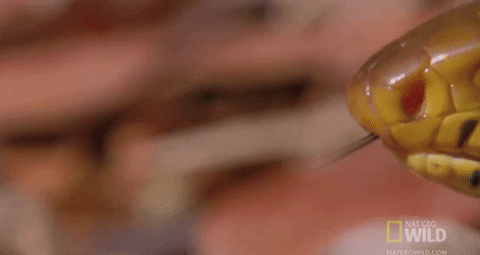
Just by looking at a snake or lizard, you can actually gauge how much it relies on this sense. The longer these forks are, the more the animal relies on them as it gains more directional information with each flick. In the photos below we see an iguana, which relies primarily on sight, has a weakly forked tongue, as opposed to the strongly forked tongue of a garter snake.
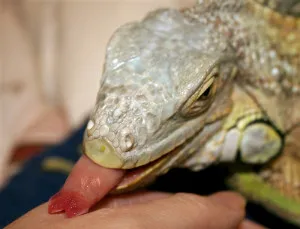
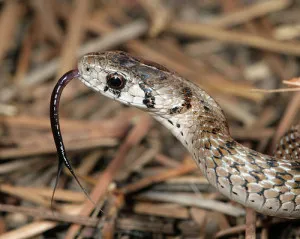
Image Links: 1, 2, 3, 4, 5, 6, 7,
